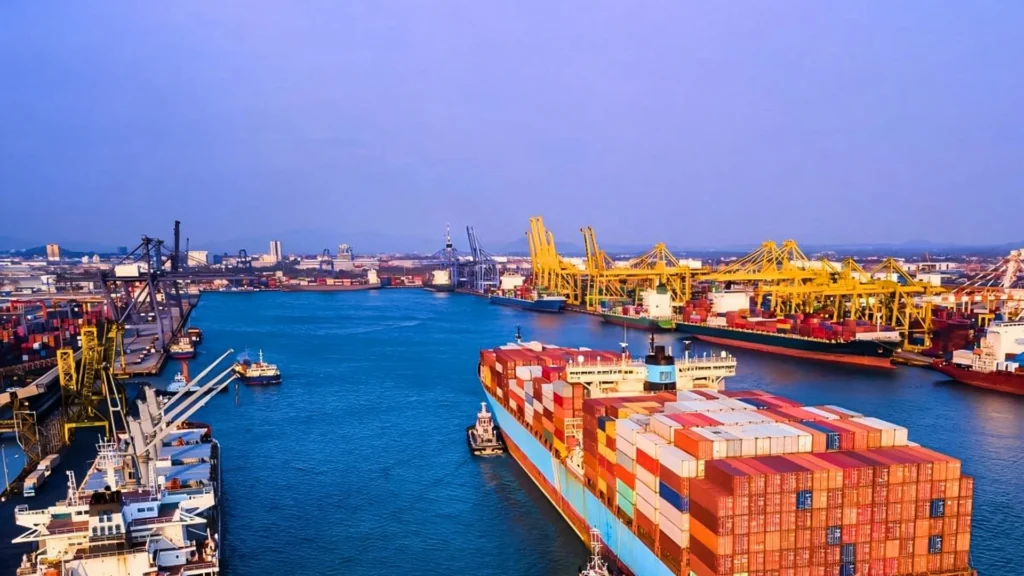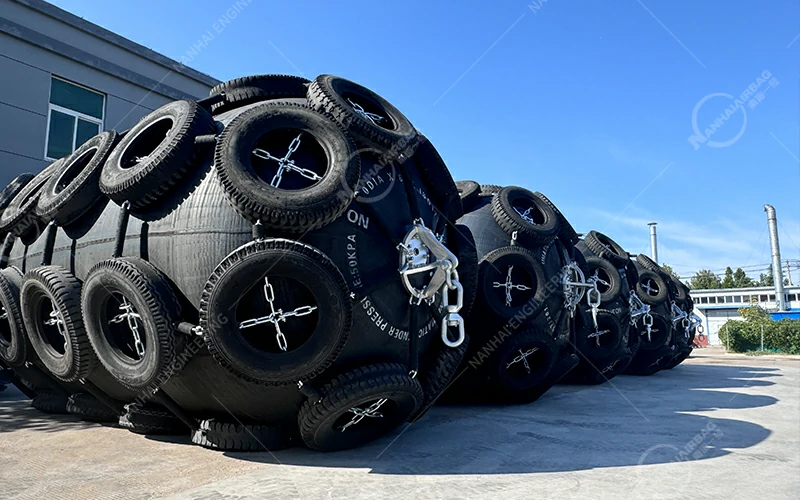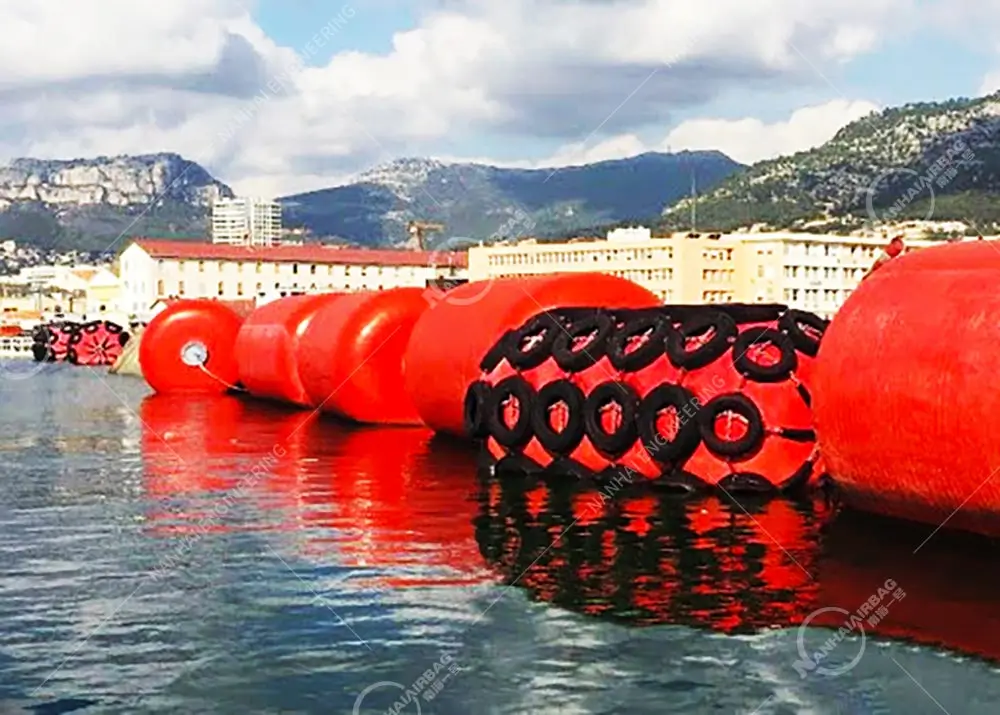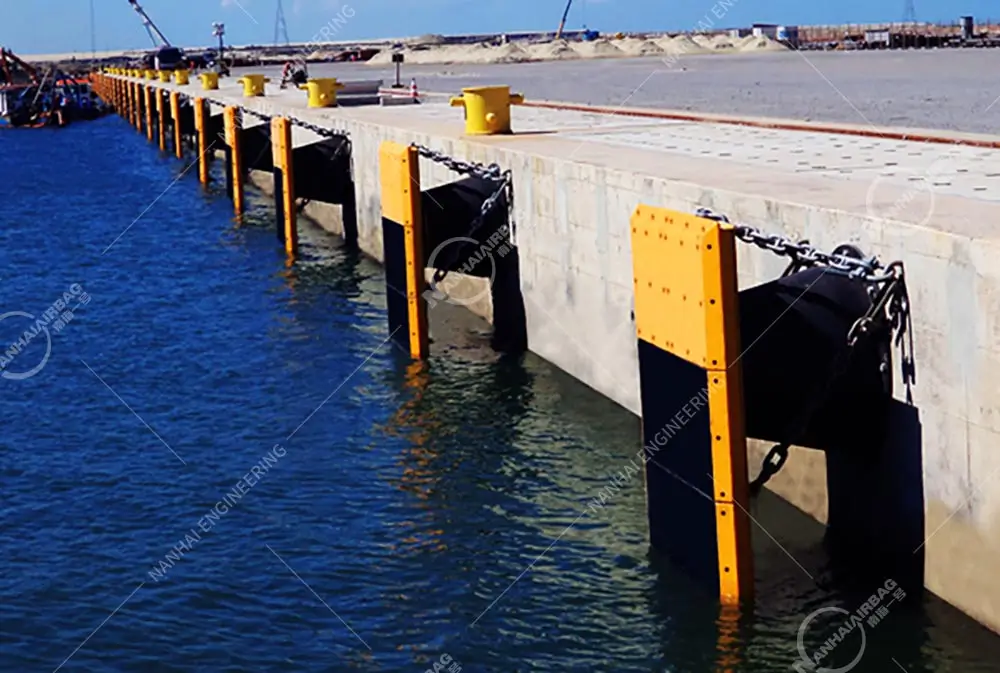How to Replace and Install D Fenders?
05/14/2025Maintenance Guide for Long-Lasting Dock Bumpers
05/14/2025Understanding the Importance of Ship Fenders
In the maritime world, ship fenders play a crucial role. They are the unsung heroes of the docks, protecting vessels and infrastructure from damage.
These robust devices absorb the impact energy of a ship as it berths, preventing costly and potentially dangerous collisions. They come in various types, each designed for specific applications and conditions.
Choosing the right fender for your vessel is not a decision to be taken lightly. It requires a deep understanding of the vessel’s characteristics, the docking conditions, and the fender’s capabilities.
This article aims to shed light on the importance of ship fenders. It will delve into their types, uses, and benefits, as well as guide selection and maintenance.
By the end, you’ll appreciate how these humble devices contribute significantly to maritime safety and the longevity of our vessels and infrastructure.

The Role of Ship Fenders in Maritime Safety
Ship fenders are vital for safe docking operations. They cushion the impact when ships come into contact with docks or other vessels. This protection prevents physical damage and reduces the risk of accidents.
Without fenders, vessels could sustain severe structural damage. The same goes for port facilities, leading to costly repairs and downtime. Fenders help avoid these disruptions, ensuring smooth and efficient operations.
Safety is paramount in maritime activities. Ship fenders support this by maintaining the structural integrity of vessels. They also play a role in environmental protection.
By mitigating collision impact, fenders reduce oil spill risks. They also prevent other environmental hazards, contributing to cleaner seas. Thus, ship fenders are not just equipment; they are essential safety tools in the maritime industry.
Types of Ship Fenders and Their Applications
Ship fenders come in various forms to meet diverse maritime needs. Each type serves a specific purpose, providing unique advantages. Understanding these fender types aids in choosing the right one for your vessel.
Here are some common types of ship fenders:
- Pneumatic Fenders: Ideal for large vessels, they offer flexibility and high energy absorption.
- Foam Fenders: Known for durability and resistance to harsh conditions.
- Rubber Fenders: Strong and versatile, suitable for most docking scenarios.
- Cone Fenders: Efficient energy distribution, ideal for heavy-duty berthing operations.
Fenders like pneumatics are especially useful in open-sea mooring. Foam fenders find their place in rugged environments. Meanwhile, rubber and cone fenders handle diverse docking needs with ease.
Adapting to different sizes and shapes, these fenders ensure vessel safety. Each type’s material composition suits specific maritime applications. This adaptability is vital for maintaining operational efficiency.
Correct fender selection prevents vessel damage. It also reduces maintenance costs significantly. Understanding fender applications is crucial in protecting both ships and port infrastructure.
Selecting the appropriate fender ensures longevity and effectiveness. Mariners should consider environmental factors and docking requirements. By doing so, they optimize safety and cost efficiency.
Pneumatic Fenders
Pneumatic fenders are inflatable, filled with air or water(hydropneumatic fenders). Their flexibility allows them to absorb significant impact energy. These fenders are perfect for large vessels, including oil tankers and cargo ships.
Their robust design makes them reliable in open waters. They adapt to varying sea states, providing essential protection. Additionally, their inflation system makes storage and transport easier.

Foam Fenders
Foam fenders stand out for their durability. They contain resilient foam, encased in a strong polyurethane outer layer. This design enables them to absorb energy without bursting.
These fenders perform well in harsh environments. They resist extremes of temperature and salinity. Consequently, foam fenders are a go-to choice for diverse maritime conditions.

Rubber Fenders
Rubber fenders are ubiquitous at ports worldwide. They offer a balanced mix of toughness and elasticity. Made from high-quality rubber, they withstand repetitive impacts well.
These fenders fit a range of vessel sizes and docking situations. Their versatility makes them a practical choice for many mariners. They are also easy to maintain, extending their service life.

Cone Fenders
Cone fenders possess a unique shape, optimizing energy distribution. They handle heavy loads, making them ideal for industrial and commercial docks. Their efficient design reduces installation complexity.
These fenders are suitable for high-berth vessels. Their robust nature ensures they perform consistently under pressure. Cone fenders represent engineering excellence in maritime safety.

Selecting the Right Fender for Your Vessel
Choosing the appropriate fender requires an understanding of vessel specifics. Consider the vessel’s size and weight to ensure adequate protection. Matching these factors with the fender’s energy absorption capacity is crucial.
Docking conditions also play a vital role in fender selection. Different ports present unique challenges, influencing fender performance. Knowing the local environmental conditions helps in making informed decisions.
Another important factor is the vessel’s docking frequency. Frequent docking increases wear and tear on fenders. Therefore, investing in durable materials might be more cost-effective over time.
Consulting with marine engineers can aid in selecting the most suitable fender. Their expertise ensures optimal compatibility and performance. This collaboration helps avoid costly mistakes and enhances vessel safety.
Ultimately, selecting the right fender is not just about protection. It’s about prolonging the life of your vessel and infrastructure. A well-chosen fender can significantly reduce maintenance costs and prolong structural integrity.
The Science Behind Fender Impact Absorption
Ship fenders are essential in reducing impact damage. They absorb kinetic energy during docking and mooring operations. This energy absorption helps in protecting both the vessel and dock structures.
The mechanics of fender performance involve material compression and deformation. When a vessel makes contact, the fender compresses, dissipating energy. This reduces the force transferred to both the ship and the dock.
Materials play a critical role in energy absorption. Common materials include rubber and foam, known for their high elasticity. These materials allow fenders to rebound effectively, maintaining their shape after impact.
Fender design also influences energy absorption. Larger fenders tend to offer better performance due to more surface area for energy diffusion. Specific shapes can aid in dispersing impact forces across the structure.
Advanced engineering has improved fender technology over time. Researchers continuously explore new materials and designs. These advancements lead to better impact resilience and durability in various maritime conditions.
Maintenance and Longevity of Ship Fenders
Regular maintenance is crucial for fender performance. Inspect fenders for signs of wear or damage frequently. Early detection can prevent costly repairs and ensure safety.
Cleaning is a simple maintenance task. Remove marine growth and debris regularly to maintain effectiveness. Clean fenders also reduce environmental impact from accumulated toxins.
Check for deformation and material degradation. Over time, exposure to sunlight and saltwater can degrade materials. Routine checks help identify when replacements are necessary.
Repair minor damages promptly. Small cuts or tears can escalate if left untreated. Using appropriate repair kits can extend the fender’s lifespan.
Schedule professional inspections for more thorough assessments. Experts can evaluate fenders under various conditions. This proactive approach can extend their service life and optimize performance.
Environmental and Cost Considerations
The production of ship fenders can impact the environment. Choosing eco-friendly materials helps mitigate this, and manufacturers are increasingly using sustainable resources.
Cost is another vital factor when selecting fenders. The balance between quality and price is essential. High-quality fenders often result in fewer repairs and longer lifespans.
Consider lifecycle costs rather than just the initial purchase price. Durable fenders can lower long-term expenses. Consider maintenance and replacement frequency in your calculations.
Fender recycling is becoming popular. Recycled materials reduce waste and conserve resources. This approach supports sustainable marine operations.
Investment in quality fenders can save money over time. By reducing damage and maintenance needs, they provide cost-effective vessel protection.
Ship Fenders vs. Dock Fenders: Understanding the Difference
Ship fenders and dock fenders serve related but distinct roles. Both protect against impact, yet they do so differently. Understanding these roles helps in proper selection.
Ship fenders attach to vessels. They protect the ship’s hull during mooring. Their design ensures they absorb significant shock and force.
Dock fenders mount to berthing structures. They shield the dock and vessels from collision damage. This protection is vital for maintaining dock integrity.
Material choice varies between ship and dock fenders. Dock fenders often require more robust materials due to fixed positioning. This difference informs specific application needs.
Selecting between these fenders depends on the operational context. Knowing the difference ensures optimal protection for both vessel and dock structures. Proper selection enhances both safety and efficiency.
The Future of Ship Fenders: Technological Advancements and Innovations
The maritime industry constantly evolves, impacting ship fender design. Advanced materials and technologies are paving the way for safer berths. This innovation ensures the durability and efficiency of fenders.
Recent developments include smart materials and sensors. These advancements enable real-time monitoring of fender conditions. It allows early detection of wear and potential failure.
Additionally, environmental concerns drive the use of sustainable materials. Recycled and eco-friendly fender products are increasingly popular. This trend aligns with global sustainability goals.
Customization is on the rise in fender technology. Tailored solutions meet specific vessel and port needs. This flexibility enhances operational efficiency.
These technological strides make maritime operations safer. They ensure that fenders remain a crucial line of defense. Continuous innovation keeps pace with industry demands.
Conclusion: The Integral Role of Fenders in the Maritime Industry
Ship fenders are crucial for maritime safety. Their protective role is undeniable. Without them, vessels and docks face higher damage risks.
These devices safeguard against impact and abrasion. They absorb kinetic energy during berthing. This minimizes potential harm to the ship and port.
Selecting the right fender is vital. It ensures compatibility and effectiveness. Proper installation and maintenance further extend fender life.
Innovations continue to enhance fender performance. These improvements address both safety and environmental concerns. The industry seeks a balance between functionality and sustainability.
In summary, fenders are indispensable. They ensure the longevity of maritime infrastructure. Moreover, they contribute to the safe docking of vessels globally.
